What has the X factor got to do with building regulations?
The X factor has become an established part of Saturday night television since starting in 2004. But did you know that the X factor has been in Approved Document A (Structure) since it was first introduced back in 1985?
While a structural engineer can finely tune your design, you can use the really useful table below to help determine minimum pier and return sizes to ensure the stability of masonry without needing the need for structural calculations.
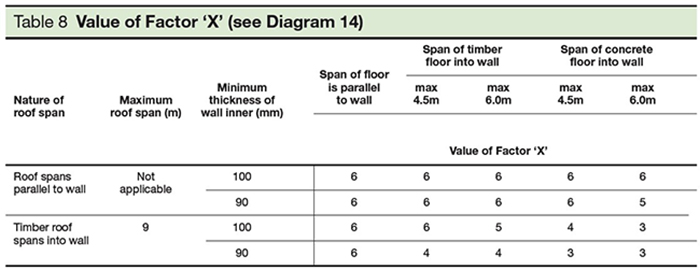
In reality the table is a fail-safe that has taken design loads and included a safety factor to ensure it’s stable in all situations.
For example if a roof with a maximum 9m span bears onto the wall and the inner masonry leaf is at least 100mm thick and at least a 7.3N/mm2 compressive strength, then the X factor is 6. If the same structure also had a first floor with a maximum 4.5m span onto it then the X factor would still be 6 or if the span is between 4.5m and 6m then the X factor would be 5 instead.
Once you know the X factor you can then use it in Diagram 14 to work out the masonry sizes:
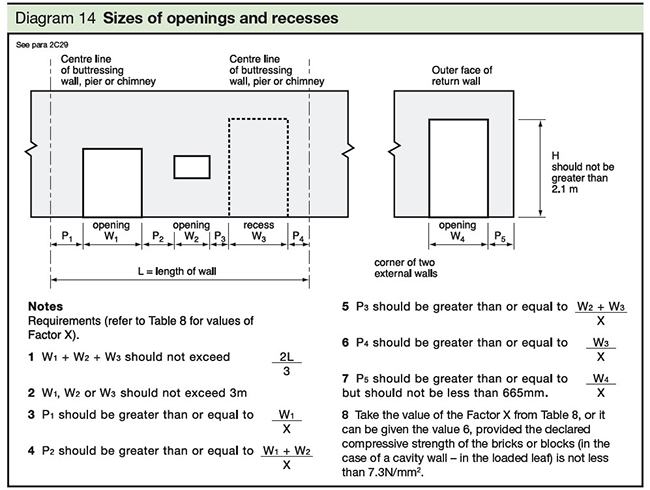
Diagram 14 has some simple rules, the main one (1) is that opening sizes are limited to 2L/3, so if the supporting wall is 6m long then the sum of the openings can’t exceed 2x6/3 = 4m.
The width of the piers are then determined using the X factor in relation to adjoining openings and the centreline of the return or buttressing walls.
If we use 6 as the X factor then we can calculate the pier sizes for a 6m long wall.
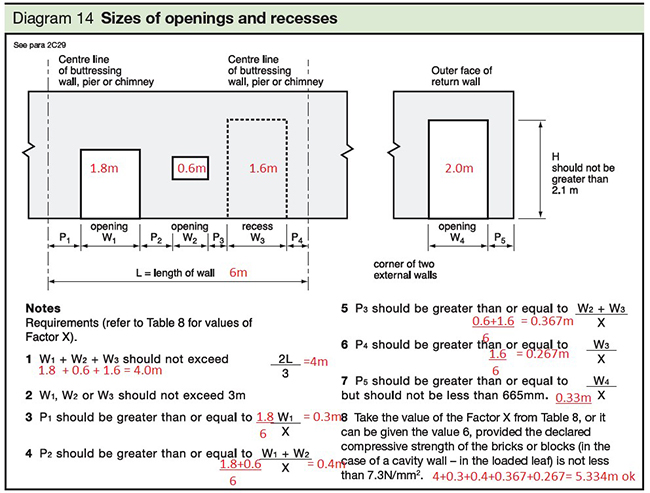
So the openings proposed all work using the formula and X factor with 666mm to spare. Larger openings can still be built but these would need a structural design that might include thicker walls or wind posts to maintain stability. It's also worth noting that the return corner pier (note 7) still needs to be at least 665mm wide despite the formula offering 330mm for W4. Remember W4 will be built in the wall buttressing the loaded wall so the 665mm brickwork return provides this stability.
So if you design your building to diagram 14 then it’s three votes from us!
Further information
View or download Part A and the rest of the Building Regulations Approved Documents:
Please Note: Every care was taken to ensure the information was correct at the time of publication. Any written guidance provided does not replace the user’s professional judgement. It is the responsibility of the dutyholder or person carrying out the work to ensure compliance with relevant building regulations or applicable technical standards.
Sign up to the building bulletin newsletter
Over 48,000 construction professionals have already signed up for the LABC Building Bulletin.
Join them and receive useful tips, practical technical information and industry news by email once every 6 weeks.
Subscribe to the Building Bulletin

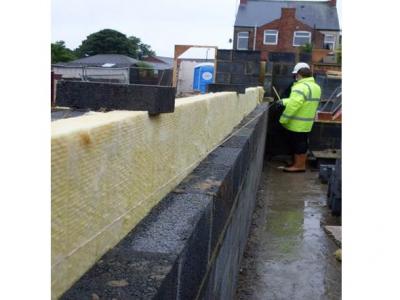
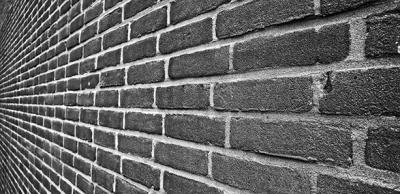

Comments
Buttressing
Submitted 6 years 7 months ago
W4
Submitted 6 years 7 months ago
If the pier is calculated as W4/X = 665mm - can W4 be as much as 3990mm.
Can we also assume that W4 can be wider with corresponding increase in pier size?
Is W4 limited to 2/3 the length of the wall?
No mention of W4 in the other notes or in relation to W1, W2 or W3 as not exceeding 3m.
Reply
Submitted 6 years 7 months ago
Many thanks for pointing this out - you'll see above that we've clarified this with some amended wording.
Julie
W4 again
Submitted 6 years 7 months ago
Thanks for reply on the size of the pier.
Any thoughts as to whether W4 can be 6x the pier width?
i.e. a pier width of minimum 665mm would allow W5 to be 3990mm?
A pier width of 890mm would allow W5 to be 5340mm?
Regards,
F
Reply
Submitted 6 years 7 months ago
Diagram 14 provides guidance on ensuring the structural stability of the load bearing wall and its buttressing corner piers without the need to seek structural design.
As such you are quite right, the size of P5 (the buttress) would only increase above 665mm if W4 was wider than 3.99m.
However compliance with AD L - Conservation of Fuel & Power is more likely to limit the actual sizes permitted because 'reasonable provision would be to limit windows and doors sizes to 25% of the floor area of the extension'.
David
Webmaster note
Submitted 6 years 7 months ago
W3 or W4 - openings over 4m
Submitted 1 year 9 months ago
My question is, how can biofolding doors or entrances into extensions above 3m ever be allowable under the building regulations? A quick google search shows bifolds are manufactured up to widths of 8.4m - hence this rule does not seem to be enforced.
One obvious solution would be to use a portal frame (i.e. wind posts / goal posts) however it states "under no circumstance" hence, a portal frame would still not be compliant.
Over the years I have worked on multiple projects which have openings bigger than 3m and this has never been questioned by the buildings inspector - is this simply ignorance, or is there a reason this rule can be exceeded? I have read this section of the building regulations probably monthly for the past 5yrs and this statement has never sat right with me. Is there something I am missing?
LABC Response
Submitted 1 year 9 months ago
Thank you for your enquiry.
The approved document guidance states that the opening should not exceed 3m rather than the regulations, which state that the building shall be constructed so that the combined dead, imposed and wind loads are sustained and transmitted by it to the ground safely etc., etc. As the approved document is only one way of showing compliance with the regulations, there are alternative solutions, backed by structural calculations, that could be suitable and would allow openings to exceed 3m. The article does not suggest that “under no circumstance” should a frame structure be used. I hope this offers some clarity.
Best,
LABC Team
Diagram 14 for one opening.
Submitted 1 year ago
I am mainly concern about condition that W1 should not exceed 2L/3? Is this applicable?
LABC Response
Submitted 9 months 3 weeks ago
Best,
LABC Team
Add new comment